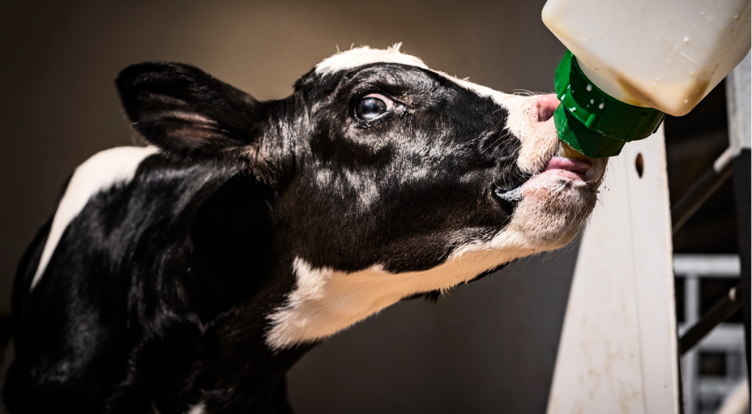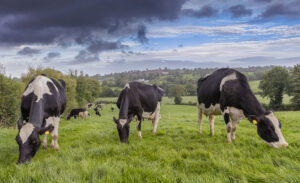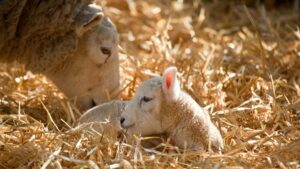For any calf or lamb born on the farm, a good start to life is always the best start. How is this achieved? Through the first feed of colostrum.
Colostrum is a nutrient rich energy and protein source produced in the first milk of cows and sheep following giving birth. It plays a pivotal role in building the neonates immune system for life on the farm as it contains immune cells from the dam which, if given following appropriate measures, are absorbed through the gut wall into the bloodstream to provide protection for the first three months of life.
To achieve the best possible impact from colostrum feeding, there are 3 simple, yet effective measures you can follow. And they are outlined by the three “Q’s”. Quality, Quantity and Quickly.
Good quality colostrum from an animal that has been well fed throughout her pregnancy is very important to give the best possible protection to her progeny. This protection is through immune cells called IgG antibodies, and colostrum should contain a minimum of 50g of IgG antibodies per litre of colostrum to provide effective immunity. Measuring the quality of colostrum is a fantastic way to eliminate the risk of feeding a poor first feed. A Brix Refractometer is an easy tool which can be used on farm to test colostrum in under 30 seconds. The brix reading aim should be a minimum of 22% for cattle and 26.5% for sheep, to supply sufficient protection to the neonate.
If the quality is not good enough, then powdered colostrum can be used to “top-up” the quality of the first feed. Various products are available to do this but always try to ensure IgG protection is supplied through these powders. If your herd or flock have consistently low brix readings, then an investigation into the diet leading up to giving birth may be warranted. For example, depending on the silage quality, ewes may need supplemented with meal before lambing. Alternatively, the interval between having offspring may be too long and fertility problems require resolution.
The volume of colostrum fed is crucial in supplying the correct number of immune cells to the neonate. A calf should receive 10% of their birth weight within the first 6 hours of life. A lamb should receive 200ml within the first 2 hours of life, followed by a further 200ml/kg of bodyweight within the first 24 hours of life. This can be supplied through direct suckling, which is difficult to measure, or more reliably through bottle feeding or tube feeding.
If the dam has not produced enough colostrum, and there is no home sourced frozen colostrum, then supplementary feeding of powdered colostrum should be given to ensure the correct volume is supplied.
The timing at which the first feed is given is crucial to allow the immune cells to be absorbed through the gut wall. This is because this absorptive capacity greatly reduces over time. Ideally, all calves and lambs should be fed the first feed within the first two hours of life as this is the most absorptive time. After this, the absorption starts to decline. However, if two hours is not possible, even getting this first milk in within the first six hours of life is a good management policy.
If overnight management is not an option on your farm, then ensure the first thing you do on the morning a newborn has arrived is manage their first feed. This will greatly increase the chances that the gut wall will absorb as many immune cells as possible.
For more information or to purchase colostrum to get your calves or lambs off to the right start, visit or contact your local Drummonds Store.



